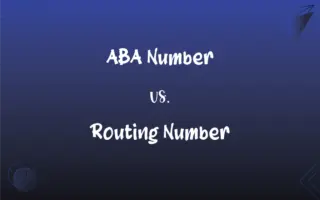Hind vs. Hart: What's the Difference?
By Harlon Moss & Aimie Carlson || Updated on May 21, 2024
A hind is a female red deer, while a hart is a male red deer, especially one over five years old.

Key Differences
A hind refers to a female red deer, typically recognized for her role within the herd and her nurturing instincts towards her young. In contrast, a hart is a term used to describe a male red deer, specifically one that is mature and over five years old, often associated with strength and majesty.
Hinds are essential in maintaining the social structure of deer herds, where they often lead and protect the younger members. Harts, on the other hand, are more solitary and are known for their antlers, which they use in combat during mating season to assert dominance and win mates.
While a hind does not grow antlers, a hart is distinguished by his impressive antlers, which grow and shed annually. These antlers are a symbol of maturity and power in the animal kingdom.
In literature and folklore, hinds are frequently depicted as gentle and nurturing figures, whereas harts are often portrayed as elusive and noble creatures, embodying the wild and untamed aspects of nature.
Comparison Chart
Gender
Female red deer
Male red deer
ADVERTISEMENT
Age Reference
Any age
Specifically over five years
Social Role
Herd caretaker and protector
Solitary or leader in mating
Physical Traits
No antlers
Grows and sheds antlers
Symbolism
Gentleness and nurturing
Nobility and strength
Hind and Hart Definitions
Hind
Female red deer.
The hind carefully watched over her fawns.
ADVERTISEMENT
Hart
Symbol of wild majesty.
The hart's presence is often a highlight in wildlife photography.
Hind
Social and protective animal.
Hinds are known to form close-knit groups.
Hart
Male red deer over five years old.
The hart roamed the forest with majestic antlers.
Hind
Key to herd dynamics.
The hind's behavior influences the entire group's movement.
Hart
Known for strength and dominance.
During the rutting season, the hart fiercely defends his territory.
Hind
Deer without antlers.
Unlike the hart, the hind does not have antlers.
Hart
Solitary except during mating season.
Outside of mating season, the hart usually remains alone.
Hind
Located at or forming the back or rear; posterior
An animal's hind legs.
The hinder part of a steer.
Hart
Antlered deer.
Each spring, the hart sheds and regrows his antlers.
Hind
A female red deer.
Hart
A male deer, especially a male red deer over five years old.
Hind
Any of various spotted groupers of the genus Epinephelus or various related fishes of the genus Cephalopholis.
Hart
A male deer, especially the male of the red deer after his fifth year.
Hind
Chiefly British A farm laborer, especially a skilled worker.
Hart
A male red deer or one of related species.
Hind
(Archaic) A country bumpkin; a rustic.
Hart
Obsolete spelling of heart
Hind
Located at the rear (most often said of animals' body parts).
Hart
A stag; the male of the red deer. See the Note under Buck.
Goodliest of all the forest, hart and hind.
Hind
Backward; to the rear.
Hart
United States playwright who collaborated with George S. Kaufman (1904-1961)
Hind
A female deer, especially a red deer at least two years old.
Hart
United States lyricist who collaborated with Richard Rodgers (1895-1943)
Hind
A spotted food fish of the genus Epinephelus.
Hart
Male red deer
Hind
(archaic) A servant, especially an agricultural labourer.
Hind
The female of the red deer, of which the male is the stag.
Hind
A spotted food fish of the genus Epinephelus, as Epinephelus apua of Bermuda, and Epinephelus Drummond-hayi of Florida; - called also coney, John Paw, spotted hind.
Hind
A domestic; a servant.
Hind
A peasant; a rustic; a farm servant.
The hind, that homeward driving the slow steerTells how man's daily work goes forward here.
Hind
In the rear; - opposed to front; of or pertaining to the part or end which follows or is behind, in opposition to the part which leads or is before; as, the hind legs or hind feet of a quadruped; the hind man in a procession.
Hind
Any of several mostly spotted fishes that resemble groupers
Hind
Female red deer
Hind
Located at or near the back of an animal;
Back (or hind) legs
The hinder part of a carcass
Hind
Nurturer in the deer herd.
A hind often leads the younger deer to safe grazing areas.
FAQs
Why is a hart important in deer herds?
Harts are important for breeding and maintaining genetic diversity.
Can a hart be under five years old?
No, a male red deer under five years is not typically referred to as a hart.
What is a hart?
A hart is a male red deer, particularly one over five years old.
Do hinds have antlers?
No, hinds do not grow antlers.
Do hinds and harts live together?
Hinds live in herds, while harts are more solitary except during mating season.
What role does a hind play in the herd?
Hinds are caregivers and protectors within the herd.
What behavior distinguishes a hart during the rutting season?
Harts engage in fights using their antlers to establish dominance.
What is a hind?
A hind is a female red deer.
What is the significance of a hart's antlers?
Hart's antlers symbolize maturity and are used in mating combats.
What sound does a hind make?
Hinds communicate with soft grunts and bleats to their fawns.
Can a hart lead a herd?
During mating season, a dominant hart may temporarily lead.
How often do harts shed their antlers?
Harts shed their antlers annually.
What sound does a hart make?
Harts make a loud bellowing call during mating season.
Do hinds fight for dominance?
Hinds rarely fight; they establish social order through non-violent means.
Are hinds and harts the same species?
Yes, both are red deer but differ in gender and age-related characteristics.
How do hinds care for their young?
Hinds nurse and protect their fawns from predators.
What is a hart’s typical habitat?
Harts inhabit forests and open grasslands.
What is a hind’s typical habitat?
Hinds share similar habitats with harts but are often found in groups.
Are hinds larger than harts?
No, harts are generally larger and more robust than hinds.
What is a group of hinds called?
A group of hinds is commonly referred to as a herd.
About Author
Written by
Harlon MossHarlon is a seasoned quality moderator and accomplished content writer for Difference Wiki. An alumnus of the prestigious University of California, he earned his degree in Computer Science. Leveraging his academic background, Harlon brings a meticulous and informed perspective to his work, ensuring content accuracy and excellence.
Co-written by
Aimie CarlsonAimie Carlson, holding a master's degree in English literature, is a fervent English language enthusiast. She lends her writing talents to Difference Wiki, a prominent website that specializes in comparisons, offering readers insightful analyses that both captivate and inform.































































